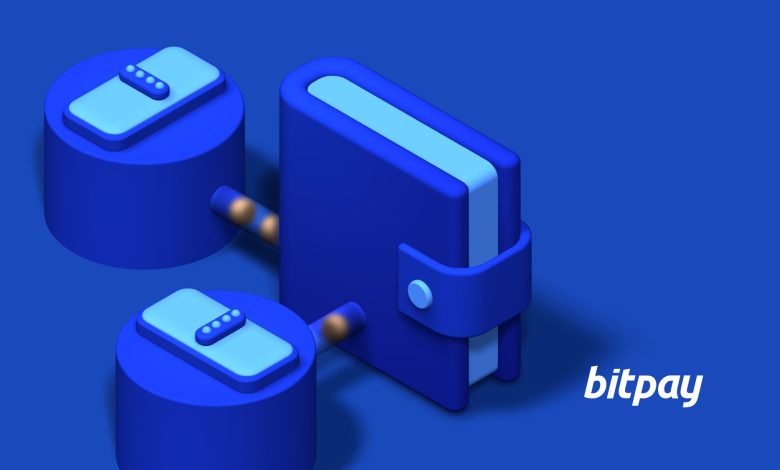How to Use Multi-Signature Wallets for Added Security

- Understanding Multi-Signature Wallets
- Benefits of Using Multi-Signature Wallets
- Setting Up a Multi-Signature Wallet
- Best Practices for Securing Multi-Signature Wallets
- How Multi-Signature Wallets Prevent Unauthorized Access
- Examples of Successful Multi-Signature Wallet Implementations
Understanding Multi-Signature Wallets
Multi-signature wallets are a type of cryptocurrency wallet that requires multiple private keys to authorize a transaction. This added layer of security makes it more difficult for hackers to gain access to your funds. Instead of relying on a single private key, multi-signature wallets distribute the responsibility among several key holders. This means that even if one key is compromised, the funds will still be safe as the hacker would need access to multiple keys to complete a transaction.
Using a multi-signature wallet involves setting up the wallet with a predetermined number of key holders, typically ranging from 2 to 5. Each key holder is required to sign off on a transaction before it can be executed. This ensures that no single individual has complete control over the funds. Multi-signature wallets are commonly used by businesses, organizations, and individuals who want to add an extra layer of security to their cryptocurrency holdings.
To set up a multi-signature wallet, you will need to generate multiple private keys and distribute them among the key holders. Each key holder will then need to import their private key into the wallet to create a multi-signature address. When a transaction is initiated, each key holder will be required to sign off on it using their private key. Once the required number of signatures is obtained, the transaction will be processed and the funds will be transferred.
In conclusion, multi-signature wallets offer an added layer of security for cryptocurrency holders by requiring multiple private keys to authorize transactions. By distributing the responsibility among several key holders, multi-signature wallets make it more difficult for hackers to gain access to funds. Setting up a multi-signature wallet involves generating multiple private keys and distributing them among key holders. This ensures that no single individual has complete control over the funds, making multi-signature wallets a popular choice for those looking to enhance the security of their cryptocurrency holdings.
Benefits of Using Multi-Signature Wallets
Using multi-signature wallets offers a range of benefits that can significantly enhance the security of your digital assets. One of the key advantages is the added layer of protection provided by requiring multiple signatures to authorize transactions. This means that even if one of the private keys is compromised, the funds will still be safe as the transaction cannot be completed without the required number of signatures.
Another benefit of multi-signature wallets is the ability to distribute control among multiple parties. This can be particularly useful for businesses or organizations that require multiple individuals to sign off on transactions. By requiring a consensus among key stakeholders, multi-signature wallets can help prevent unauthorized or fraudulent transactions.
Additionally, multi-signature wallets can provide increased peace of mind for users who are concerned about the security of their funds. Knowing that multiple signatures are required to access funds can help mitigate the risk of theft or hacking. This added layer of security can be especially valuable for users who hold a significant amount of cryptocurrency or other digital assets.
Overall, the benefits of using multi-signature wallets are clear. By requiring multiple signatures to authorize transactions, distributing control among multiple parties, and providing increased peace of mind for users, multi-signature wallets offer a powerful tool for enhancing the security of digital assets. Whether you are an individual user looking to protect your funds or a business seeking to secure your assets, multi-signature wallets can be a valuable addition to your security strategy.
Setting Up a Multi-Signature Wallet
To set up a multi-signature wallet for added security, follow these steps. First, choose a reputable multi-signature wallet provider that offers the features you need. Next, create an account on the platform and verify your identity to access the wallet creation tool. Then, select the number of signatures required to authorize a transaction and add the public keys of the signers. After that, set up the transaction limits and any additional security measures, such as two-factor authentication. Finally, review and confirm the settings to create your multi-signature wallet. By following these steps, you can enhance the security of your digital assets and protect them from unauthorized access.
Best Practices for Securing Multi-Signature Wallets
When it comes to securing multi-signature wallets, there are several best practices that users should follow to ensure the safety of their funds. By implementing these strategies, individuals can significantly reduce the risk of unauthorized access and potential theft.
- Choose reputable providers: Selecting a trusted provider for your multi-signature wallet is crucial. Look for companies with a proven track record of security and reliability to minimize the chances of any vulnerabilities.
- Use strong authentication methods: Implementing robust authentication methods, such as biometric verification or hardware tokens, can add an extra layer of security to your wallet.
- Regularly update software: Keeping your wallet software up to date is essential to protect against any known security vulnerabilities. Make sure to install updates promptly to maintain the highest level of security.
- Store backup keys securely: It is important to store backup keys in a secure location, such as a safe deposit box or a hardware wallet. This will ensure that you can access your funds in case of an emergency without compromising security.
- Monitor account activity: Regularly monitoring your account activity can help you detect any suspicious behavior early on. Set up alerts for any unusual transactions or login attempts to stay informed about the security of your wallet.
By following these best practices, users can enhance the security of their multi-signature wallets and protect their digital assets from potential threats. Taking proactive measures to secure your funds is essential in the ever-evolving landscape of cryptocurrency security.
How Multi-Signature Wallets Prevent Unauthorized Access
Multi-signature wallets are an effective way to prevent unauthorized access to your cryptocurrency funds. By requiring multiple signatures to authorize transactions, these wallets add an extra layer of security that can help protect your assets from theft or hacking attempts.
When setting up a multi-signature wallet, you can specify the number of signatures required to approve a transaction. For example, you may choose to require two out of three possible signatures, meaning that at least two of the three designated signatories must sign off on a transaction before it can be executed.
This system makes it much more difficult for a hacker to gain access to your funds, as they would need to compromise multiple accounts simultaneously. Even if one of the signatories’ accounts is compromised, the hacker would still need to obtain access to at least one more account to complete a transaction.
Overall, multi-signature wallets provide an added layer of security that can give you peace of mind when it comes to protecting your cryptocurrency investments. By requiring multiple signatures for transactions, these wallets make it significantly harder for unauthorized users to access your funds, helping to keep your assets safe and secure.
Examples of Successful Multi-Signature Wallet Implementations
There are several successful implementations of multi-signature wallets that have demonstrated the added security they provide. One example is BitGo, a popular multi-signature wallet provider that offers secure storage solutions for cryptocurrencies. BitGo uses a three-key system where one key is held by the user, one key is held by BitGo, and the third key is a backup key held by a third-party key recovery service. This setup ensures that no single party can access the funds without the cooperation of the other key holders.
Another successful implementation is Ledger, a hardware wallet manufacturer that offers multi-signature capabilities through their Ledger Nano S device. With Ledger’s multi-signature feature, users can set up a wallet that requires multiple private keys to authorize transactions. This added layer of security makes it much more difficult for hackers to gain unauthorized access to the funds stored in the wallet.
Trezor is another example of a successful multi-signature wallet implementation. Trezor is a hardware wallet that allows users to set up multi-signature wallets using their devices. By requiring multiple signatures to authorize transactions, Trezor provides an extra level of security that can help protect against unauthorized access to funds.




